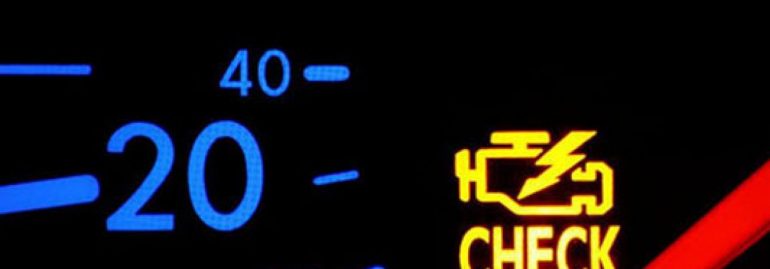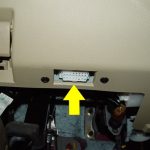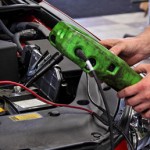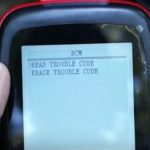Automotive scanning has revolutionized how we diagnose and repair vehicles. The increasing complexity of modern cars has made understanding automotive scanning more critical than ever for mechanics, technicians, and even car enthusiasts. This comprehensive guide delves deep into the world of automotive scanning, exploring its history, types, tools, applications, benefits, challenges, and future trends.
What is Automotive Scanning?
Automotive scanning uses electronic devices to access and interpret data from a vehicle’s onboard computer system. This system, known as the On-Board Diagnostics (OBD) system, continuously monitors various aspects of the vehicle’s performance, including engine parameters, emissions, and safety systems. By connecting a scan tool to the vehicle’s OBD port, technicians can retrieve valuable information about the vehicle’s health, identify potential problems, and guide repairs.
The concept of onboard diagnostics dates back to the 1960s when electronic systems started appearing in vehicles. Early systems were rudimentary, primarily focused on monitoring basic engine functions. However, as vehicle technology advanced, the need for more sophisticated diagnostic capabilities grew.
In the 1980s, the California Air Resources Board (CARB) introduced standardized diagnostic requirements for vehicles sold in California to address rising concerns about air pollution. This led to the development of the OBD-I system, which used a variety of connectors and protocols, making it challenging for technicians to diagnose vehicles from different manufacturers.
To address these inconsistencies, the Society of Automotive Engineers (SAE) developed the OBD-II standard in the early 1990s. OBD-II introduced a standardized 16-pin connector and a universal set of diagnostic trouble codes (DTCs), making it easier for technicians to diagnose vehicles from different manufacturers. The Environmental Protection Agency (EPA) mandated OBD-II for all light-duty vehicles sold in the United States starting in 1996.
Types of Automotive Scanning
Automotive scan tools come in various forms, each with its own strengths and limitations. They can be broadly categorized into factory scan tools and aftermarket scan tools.
Factory Scan Tools
These tools are specifically designed for vehicles produced by a particular manufacturer. They offer unparalleled precision and access to advanced functions, making them ideal for dealership technicians and specialists. Examples include:
- General Motors Tech 2
- Ford New Generation Star (NGS) and Integrated Diagnostic Software (IDS)
- Chrysler DRB3 or Star Scan for CAN-equipped vehicles
- Honda HDS or Master Tech
- Toyota Master Tech 2
Aftermarket Scan Tools
These tools are designed to work on multiple vehicle brands, making them a versatile choice for independent repair shops and DIY enthusiasts. Popular examples include:
- Snap-on models like the MT2500
- Emodis
- OTC tools such as Pegasus, Genesis, and Taskmaster
- AutoIngenuity
Aftermarket scan tools can be further categorized into:
- Code Readers: These basic tools read and clear diagnostic trouble codes (DTCs) from the vehicle’s computer. They are typically the most affordable option and are suitable for basic diagnostics.
- OBD-II Scanners: These offer more advanced features than code readers, such as live data streaming, freeze frame data, and the ability to view vehicle information like VIN and calibration IDs.
- Enhanced OBD-II Scanners: These provide even more advanced features, such as bidirectional control, module testing, and access to manufacturer-specific codes.
- Professional Scan Tools: These offer the most comprehensive diagnostics, wide vehicle coverage, and advanced functions like bidirectional control, programming, and access to technical service bulletins (TSBs).
Communication Protocols
Automotive scan tools communicate with the vehicle’s computer system using various communication protocols. Some of the common protocols include:
- Controller Area Network (CAN bus): A high-speed, robust communication system used in most modern vehicles.
- J1850: A communication protocol primarily used in Ford and General Motors vehicles.
- ISO 9141: A communication protocol commonly used in European and Asian vehicles.
Tools and Equipment Used for Automotive Scanning
A variety of tools and equipment are used in automotive scanning, each serving a specific purpose:
| Tool/Equipment | Description |
|---|---|
| OBD-II Scanner | Retrieves diagnostic information from the car’s computer system, including fault codes and sensor data. |
| Multimeter | Measures voltage, current, and resistance in electrical circuits to troubleshoot electrical problems. |
| Scan Tool | Provides access to enhanced diagnostic functions, such as viewing live data streams, performing component tests, and programming modules. |
| Compression Tester | Measures the compression pressure inside each cylinder to diagnose engine health. |
| Smoke Machine | Introduces smoke into the intake or exhaust system to detect vacuum leaks. |
| Digital Multimeters and Oscilloscopes | Measure electrical values with high precision and display electrical signals to diagnose electrical system issues. |
| Fuel Pressure Gauges and Vacuum Testers | Assess the health of the fuel system by measuring fuel pressure and checking for vacuum leaks. |
| Fluid Evacuator | Removes fluids from vehicles, such as brake fluid, coolant, and engine oil. |
| Battery Tester | Tests the battery’s voltage and capacity to determine its health. |
| Radiator Pressure Tester | Tests the cooling system for leaks and pressure issues. |
| Leak Detection Kit | Uses UV dye to detect leaks in various systems, such as the cooling system and A/C system. |
Specific Features of Scan Tools
Modern scan tools offer a variety of features that aid in vehicle diagnostics:
- Live Data Streaming: Displays real-time data from various sensors, allowing technicians to monitor engine parameters, emissions, and other system values.
- Freeze Frame Data: Captures a snapshot of the vehicle’s system data when a fault code is triggered, providing valuable information about the conditions that led to the fault.
- Bidirectional Control: Allows technicians to send commands to activate or deactivate specific components, such as actuators, solenoids, and relays, to test their functionality.
Applications of Automotive Scanning
Automotive scanning has a wide range of applications in various areas of vehicle diagnostics and repair:
- Diagnostics and Troubleshooting: Identifying and diagnosing issues related to emissions, engine performance, transmission, ABS, airbags, and other systems.
- Maintenance: Providing reminders for scheduled maintenance tasks, such as oil changes and tire rotations.
- Performance Optimization: Fine-tuning engine parameters to enhance fuel efficiency and power output.
- Safety System Checks: Monitoring the functionality of safety systems like airbags and ABS.
- Pre- and Post-Repair Scans: Assessing vehicle health before and after repairs to ensure all issues are resolved.
- Programming and Reprogramming: Updating or modifying the software in vehicle modules, such as the engine control unit (ECU) or transmission control module (TCM).
- Collision Repair: Diagnosing and repairing damage to electronic systems caused by collisions. This includes identifying issues with airbags, seat belt pretensioners, and other safety systems.
- Component Restoration: Creating digital copies of damaged or discontinued parts for reproduction.
- Vehicle Customization: Redesigning vehicle parts to accommodate modifications.
- Manufacturing of Automotive Accessories: Obtaining precise measurements for designing and manufacturing accessories like floor mats.
- Clay Modeling: Converting clay models into digital designs for automotive design.
- Inspection of Outsourced Parts: Comparing manufactured parts to original CAD models for quality control.
Completion Scans
Completion scans are performed after repairs are completed to verify that all issues have been resolved and that the vehicle’s systems are functioning correctly. This is a crucial step in the repair process, as it helps ensure the safety and reliability of the vehicle.
Benefits of Automotive Scanning
Automotive scanning offers numerous benefits for both technicians and car owners:
| Benefit | Description |
|---|---|
| Early Problem Detection | Identifying potential issues before they escalate into major problems. |
| Improved Vehicle Performance | Optimizing engine and system performance for smoother operation and better fuel efficiency. |
| Cost-Effective Maintenance | Preventing costly repairs by addressing issues early on. |
| Accurate Problem Diagnosis | Pinpointing the exact cause of issues, eliminating guesswork and unnecessary repairs. |
| Time-Efficiency in Repairs | Reducing diagnostic time and speeding up the repair process. |
| Increased Resale Value | Maintaining a comprehensive vehicle history for better resale value. |
| Enhanced Safety | Ensuring the proper functioning of safety systems. |
| Reduced Emissions | Detecting inefficiencies that lead to higher emissions. |
Challenges of Automotive Scanning
Despite its many advantages, automotive scanning also presents some challenges:
Technological Challenges
- Electrical Interference: Interference from other electronic devices or accessories can affect the accuracy of scan results.
- Assembly Line Data Link (ALDL) Connectors: Devices plugged into the ALDL connector can cause diagnostic issues.
- Multiple Fobs on a Single Key Ring: Multiple fobs can create RFI-related symptoms.
- Cybersecurity Risks: OBD-II ports can be vulnerable to hacking if not properly secured.
- Software Updates and Maintenance: Keeping diagnostic tools and software updated is essential for compatibility with new vehicle models.
Expertise and Training
- Complexity of Systems: Modern vehicles have increasingly complex systems, requiring advanced tools and expertise for accurate diagnosis.
- Technician Training and Certification: Proper training and certification are essential for technicians to effectively use scan tools and interpret diagnostic data.
Cost and Resources
- Cost Constraints: Advanced diagnostic tools can be expensive, requiring significant investment.
- Talent Shortage: Finding skilled professionals with expertise in automotive scanning can be challenging.
- Data Security and Privacy: Protecting sensitive vehicle data is crucial with increasing connectivity.
Factory vs. Aftermarket Scan Tools: A Comparison
Choosing between a factory scan tool and an aftermarket scan tool depends on various factors, including the types of vehicles you work on, your budget, and your diagnostic needs. Here’s a comparison to help you make an informed decision:
| Feature | Factory Scan Tools | Aftermarket Scan Tools | ||
|---|---|---|---|---|
| Vehicle Coverage | Specific to a single manufacturer | Covers multiple vehicle brands | ||
| Functionality | Comprehensive access to all systems and functions | May have limitations for certain advanced functions | ||
| Accuracy | Unmatched precision and detail | Generally accurate, but may lack some detail for specific brands | ||
| Cost | Typically more expensive | |||
| More affordable | Updates | Often require subscriptions for updates | Updates may be less frequent or less comprehensive | |
| User Interface | Can be complex and require specialized training | Generally more user-friendly | ||
| Best For | Dealership technicians, specialists working on a single brand | Independent repair shops, DIY enthusiasts, multi-brand workshops |
Troubleshooting Common Scanning Problems
While automotive scanning is a powerful diagnostic tool, technicians may encounter various challenges during the process. Here are some common problems and troubleshooting tips:
- Connection Issues: Ensure the scan tool is properly connected to the vehicle’s OBD-II port and that the ignition is turned on. Check for damaged or loose connectors.
- Interpreting Codes: Use a reliable code reader or scan tool that provides clear descriptions of DTCs. Consult service manuals or online resources for more information about specific codes.
- Intermittent Faults: These can be challenging to diagnose, as the fault may not be present when the vehicle is scanned. Use a scan tool with recording capabilities to capture data over time and identify intermittent issues.
- Conflicting Codes: Multiple codes may be present, making it difficult to determine the root cause. Prioritize codes based on their severity and potential impact on vehicle performance.
Choosing the Right Automotive Scan Tool
Selecting the right automotive scan tool depends on your specific needs and budget. Consider the following factors:
- Vehicle Coverage: Determine the makes and models of vehicles you will be working on.
- Functionality: Identify the features you need, such as live data streaming, bidirectional control, and module testing.
- Budget: Set a realistic budget for your scan tool purchase.
- User Interface: Choose a scan tool with a user-friendly interface that is easy to navigate.
- Updates: Consider the frequency and cost of software updates.
Safety Precautions for Automotive Scanning
When working with automotive electrical systems, it’s crucial to follow safety precautions to prevent injury or damage to the vehicle:
- Disconnect the negative battery terminal before connecting or disconnecting the scan tool.
- Do not connect or disconnect the scan tool while the engine is running.
- Use a scan tool that is compatible with the vehicle’s electrical system.
- Avoid touching any exposed wires or terminals.
- Be aware of the potential for electrical shock and take appropriate precautions.
Legal and Ethical Considerations
Automotive scanning raises several legal and ethical considerations:
- Data Privacy: Vehicle data accessed through scanning may contain sensitive information about the vehicle owner’s driving habits and location. It’s essential to handle this data responsibly and comply with relevant privacy regulations.
- Vehicle Ownership: Accessing and modifying vehicle data may raise legal issues related to vehicle ownership and unauthorized modifications.
- Legal Proceedings: Scan data can be used as evidence in legal proceedings, such as accident investigations or insurance claims. It’s crucial to ensure the accuracy and integrity of scan data and to handle it in accordance with legal requirements.
The Future of Automotive Scanning
The future of automotive scanning is driven by rapid technological advancements:
- Artificial Intelligence (AI): AI-powered diagnostic tools will analyze vast amounts of data to predict potential failures, enhance diagnostic accuracy, and provide personalized recommendations.
- Remote Diagnostics: Mechanics will be able to diagnose and repair vehicles remotely, reducing downtime and improving efficiency.
- Connected Cars and Over-the-Air Updates: Connected car technology will enable real-time data access, remote health monitoring, and over-the-air software updates.
- Augmented Reality (AR): AR tools will provide visual guidance to technicians during repairs, improving efficiency and accuracy.
- Electric Vehicle (EV) Diagnostics: Specialized diagnostic tools will be developed to address the unique challenges of EVs and hybrids.
- Blockchain Technology: Blockchain will be used to create secure and transparent vehicle histories, tracking diagnostics and repairs.
Conclusion
Automotive scanning has become an indispensable part of modern vehicle diagnostics and repair. As technology continues to evolve, we can expect even more sophisticated tools and applications that will further enhance the efficiency, accuracy, and safety of automotive repair. By understanding the different types of automotive scanning, the tools involved, and the benefits and challenges it presents, mechanics, technicians, and car owners can make informed decisions about vehicle maintenance and repair.
The future of automotive scanning promises exciting advancements that will transform the automotive industry. AI, remote diagnostics, connected car technology, and AR will revolutionize how vehicles are diagnosed and repaired, leading to increased efficiency, improved safety, and enhanced user experiences. As these technologies mature, they will play a crucial role in shaping the future of mobility.
Glossary of Terms
- ALDL: Assembly Line Data Link
- ABS: Anti-lock Braking System
- AR: Augmented Reality
- CAN bus: Controller Area Network
- DTC: Diagnostic Trouble Code
- ECU: Engine Control Unit
- EV: Electric Vehicle
- OBD: On-Board Diagnostics
- RFI: Radio Frequency Interference
- SAE: Society of Automotive Engineers
- SRS: Supplemental Restraint System (Airbag System)
- TCM: Transmission Control Module
- TSB: Technical Service Bulletin
For more information on automotive scanning, visit Total Car Diagnostics.
Consider investing in a quality automotive scanning tool for accurate and efficient vehicle maintenance.






